 |
 |
 |
| |
External validation of the Dat'AIDS score for predicting 5-year mortality among elderly people living with HIV in the Swiss HIV Cohort Study
|
| |
| |
Glasgow, 25/10/2022
Hentzien M, Frossard J, Kouyos R, Prendki V, Damas J, Hofmann E, Braun D, Schmid P, Bernasconi E, Ragozzino S, Efthimiou O, Delpierre C, Allavena C, Bani-Sadr F, Calmy A

in the Q&A it was underscored that obesity or high BI as well as smoking can contribute to mortality but are nt factors listed in score because CVD likely captures that. Jules
program abstract
Background: People living with HIV (PLWHIV) are ageing and adapted mortality prognostic indexes are needed in this future predominant population. The Dat'AIDS score includes age, comorbidities (non-HIV related cancer, cardiovascular diseases, estimated glomerular filtration rate, cirrhosis and anaemia), low body mass index and HIV-specific variables (CD4 cell count). It has been derived and internally validated in PLWHIV aged 60 years and over and allows the discrimination of four risk groups ranging from low to very high risk with the very high risk group having an expected 54% probability of 5-year survival. The score showed good discrimination and calibration in a single French cohort but has never been externally validated.
Methods: The Dat'AIDS score was calculated at the first follow-up after 1 January 2015 for all PLWHIV aged ≥60 years actively followed in the Swiss HIV Cohort Study. Survival times were evaluated until 1 January 2020. The score's prognostic capacity was evaluated by fitting a Cox model. Its discrimination capacity was first assessed using the Harrell C-statistic on the selected population and subgroups by gender, age, HIV viral load, CD4 and CD4 nadir strata, and then by calculating hazard ratios between adjacent risk groups. Calibration was assessed by comparing observed and expected survival.
Results: Among 2212 PLWHIV (1801 males; 411 females) included, 144 deaths were recorded. Mean CD4 cell count was 621±296 /mm3; 92.7% had a baseline HIV viral load <50 copies/mL. Mean observed Dat'AIDS score was 5.1±6.5 and ranged from 0 to 46. Using the validation dataset, the Cox model on the Dat'AIDS score confirmed good prognostic capacities (hazard ratio 1.09; 95% CI 1.07 to 1.11; p < 0.001). Discrimination was good, as the overall Harrell C-statistic was 0.73 (95% CI 0.69 to 0.77), similar to the derivation dataset, and ranged from 0.71 to 0.78 across subgroups. Hazard ratios across pre-defined risk groups showed a higher probability of death for higher predicted risk (Table 1) as well as good calibration (Figure 1).
Conclusion: The Dat'AIDS score showed good external validity to predict the 5-year survival, with an excellent discrimination and calibration, and will allow careful clinical monitoring in the most fragile patients.
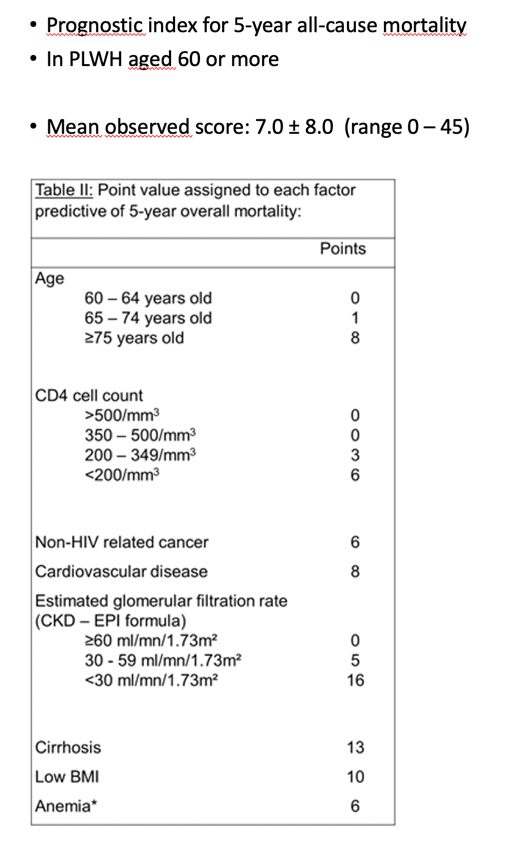
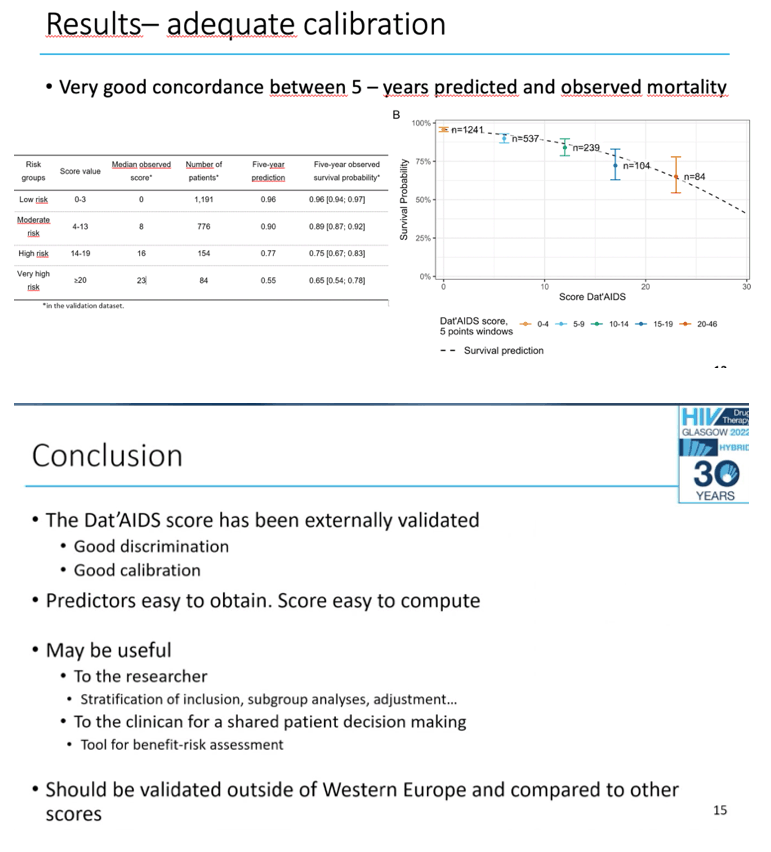
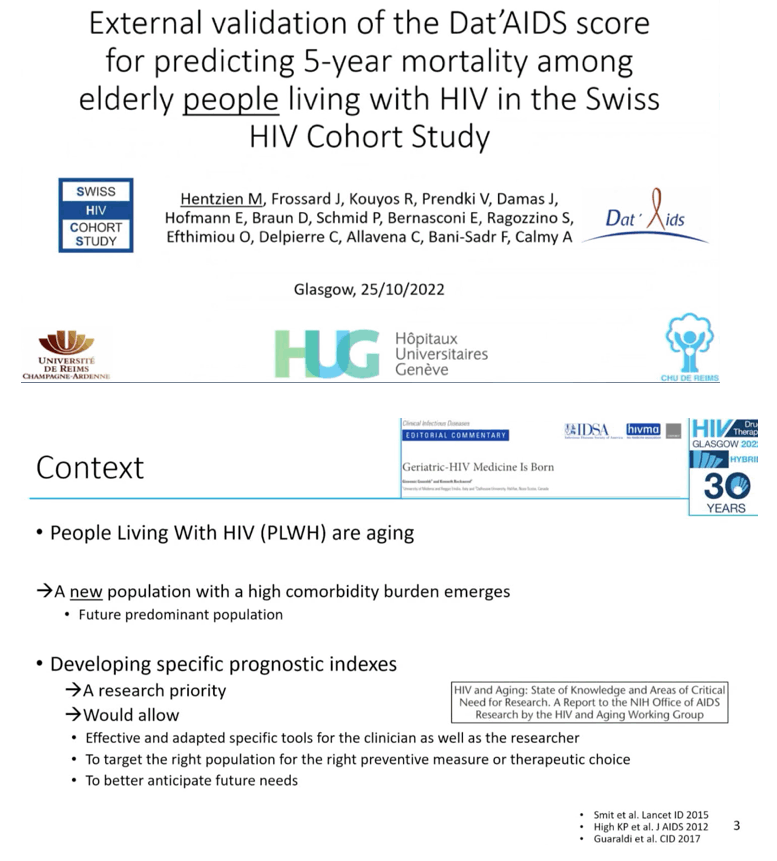
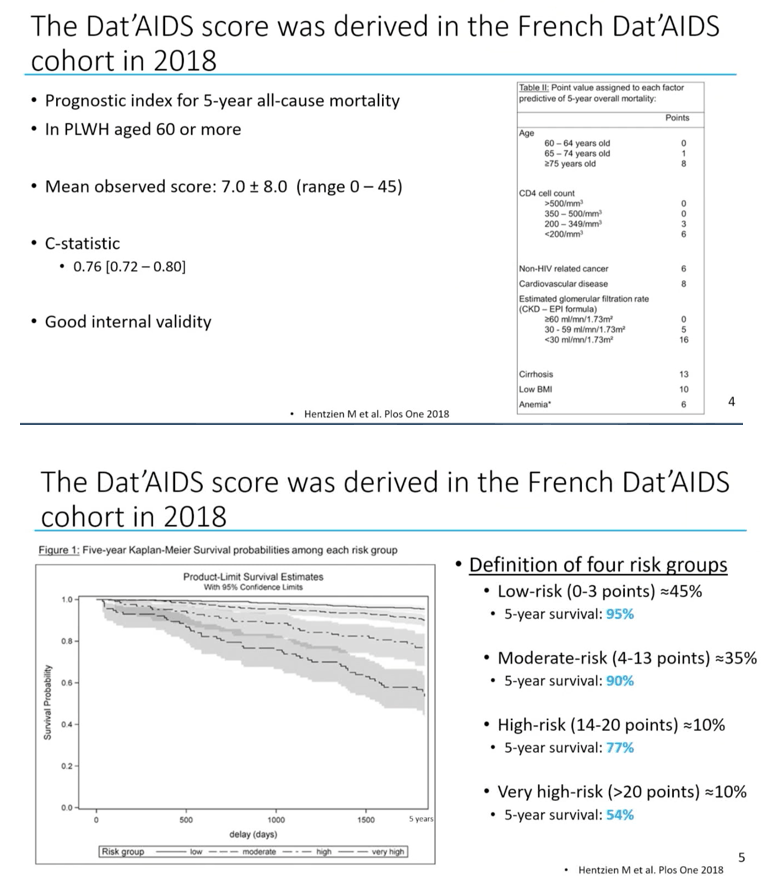
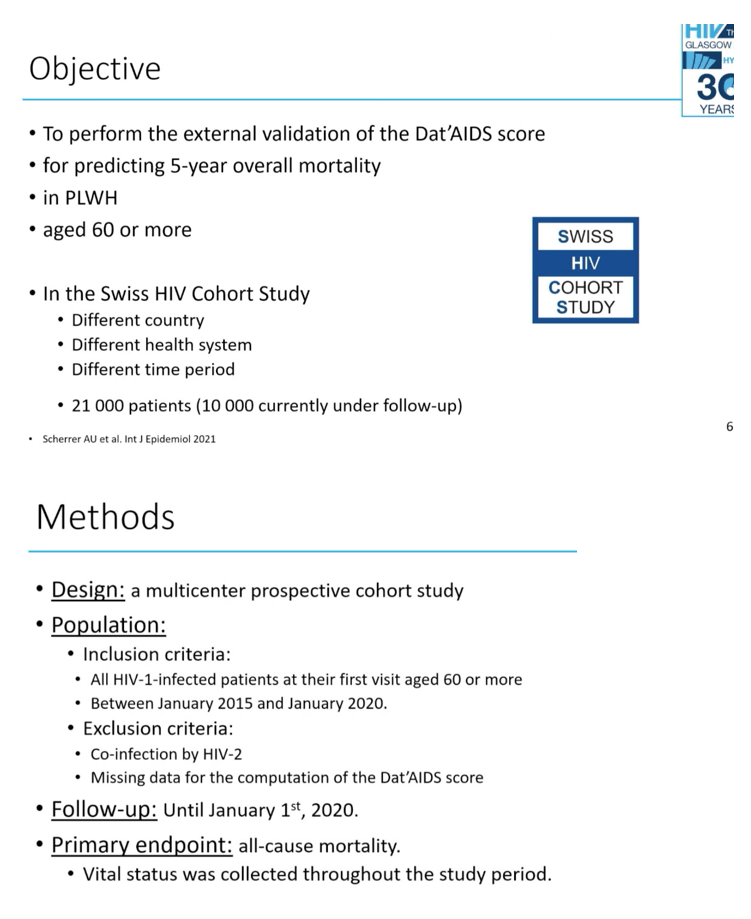

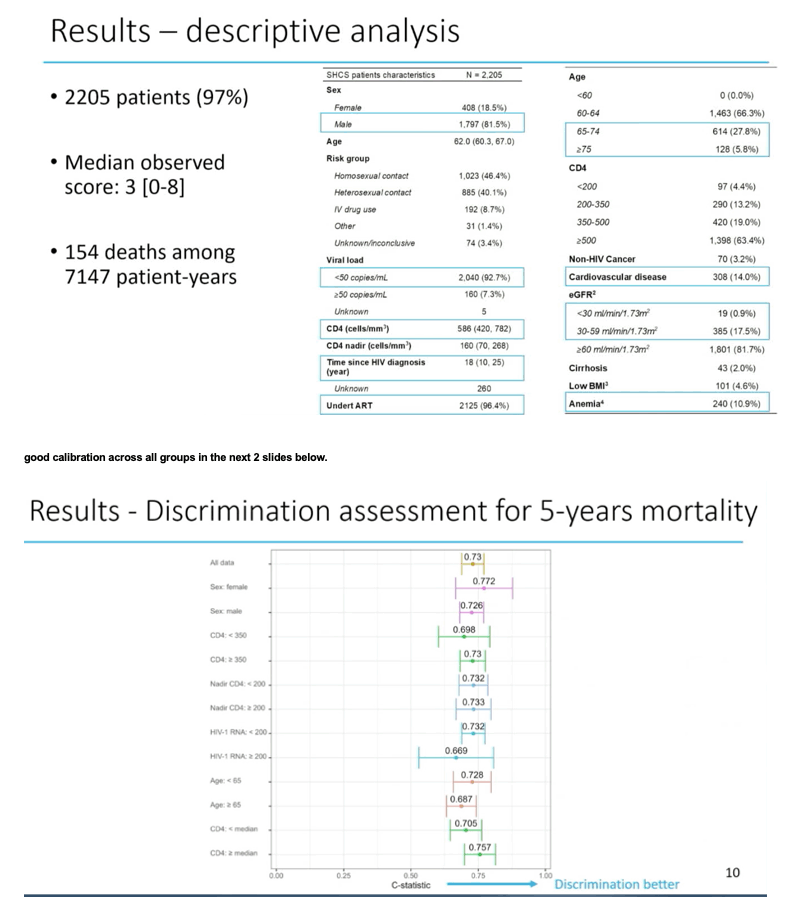
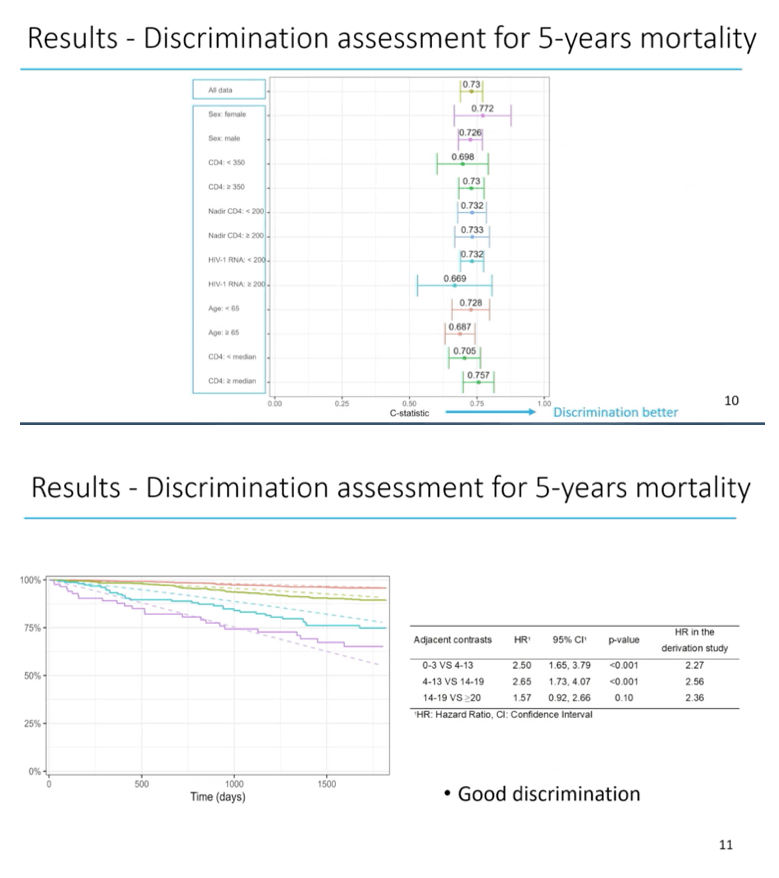
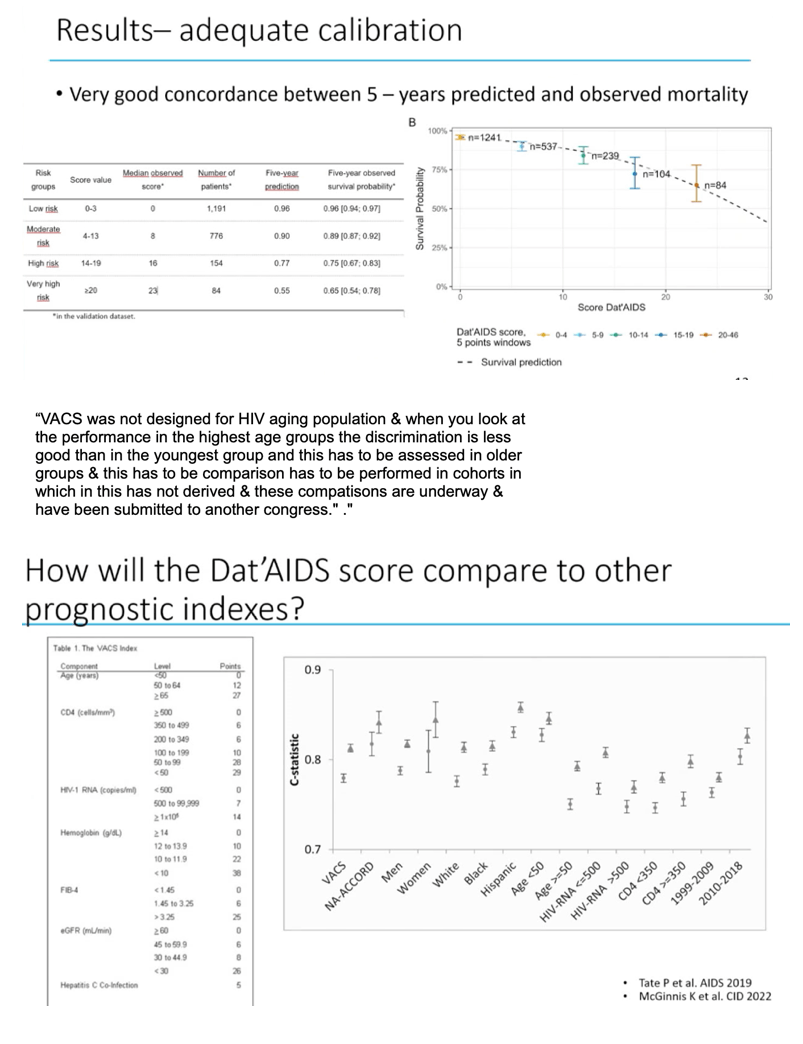
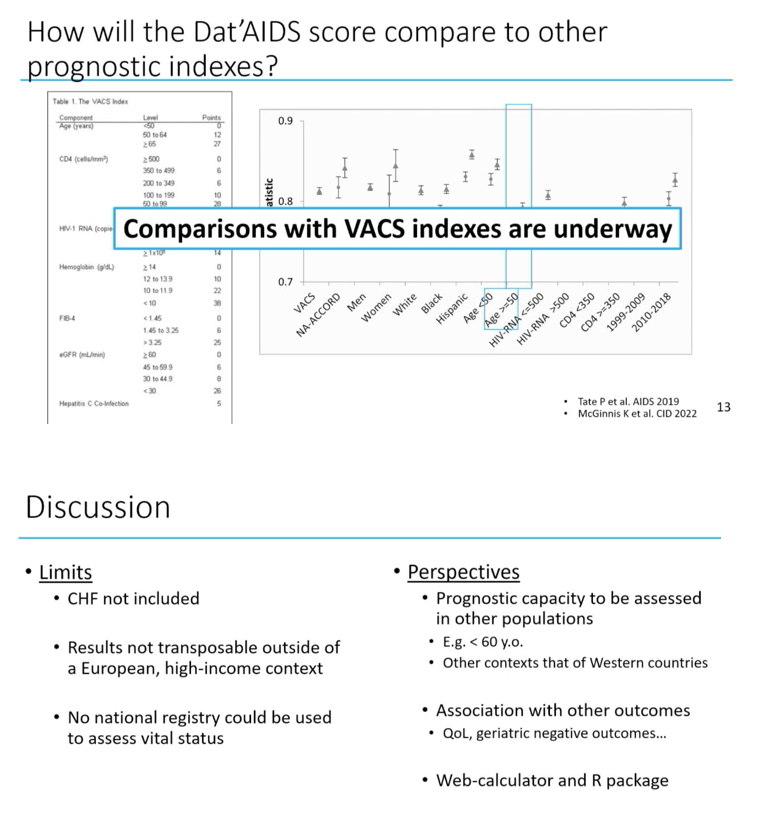
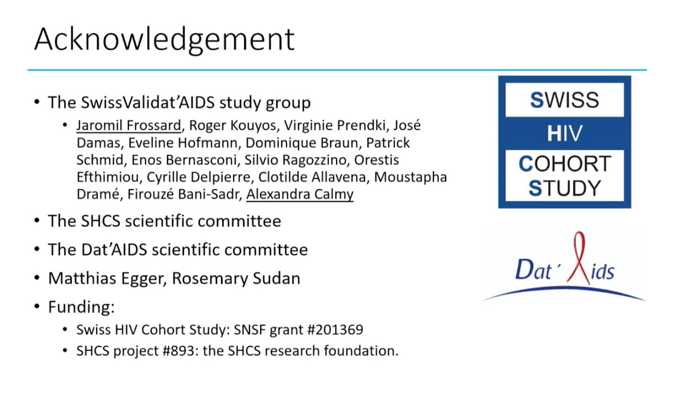
|
| |
|
 |
 |
|
|